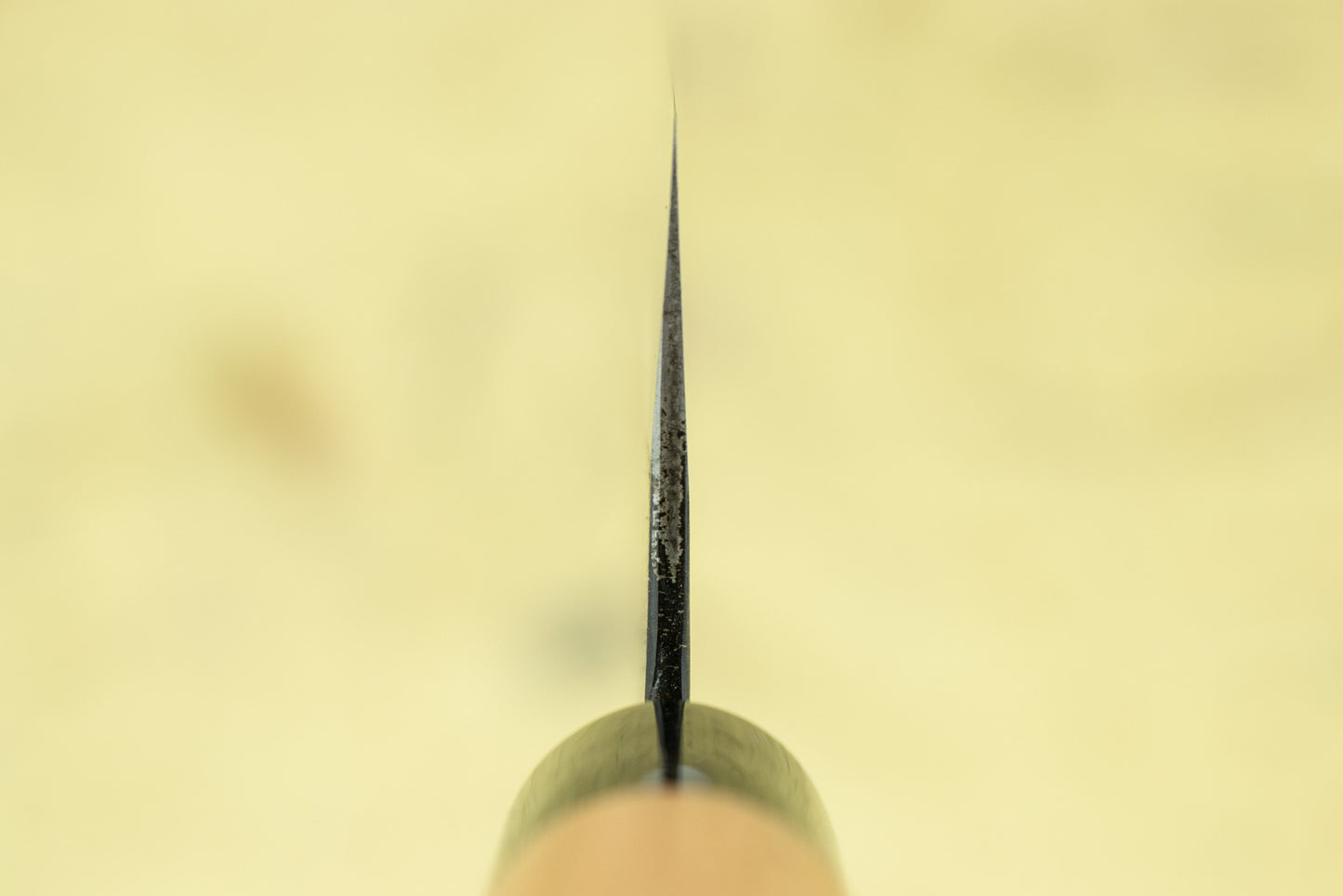Yukihiro Sakai ”Hinokuni" Shiroichi Santoku 180mm
Yukihiro Sakai ”Hinokuni" Shiroichi Santoku 180mm
Couldn't load pickup availability
About the shape - Santoku means 'Three Virtues' or 'To solve Three Problems'. The three virtues are meat, fish and vegetables, or slicing, dicing and mincing depending on your interpretation. This means that the Santoku is an all-around knife, suitable for the amateur home cook and the professional chef alike. The heigh means good clearance for big hands, while the relatively short blade can be wielded by anyone.
About Hinokuni Sakai - Yukihiro Sakai-san was apprenticed under Nishida-san in Kumamoto, a staunch traditionalist who strictly forge-welds his steel in-house. Sakai-san has learned everything from Nishida-san and continues the traditions of his sensei. Sakai-san recently started his own workshop in Kumamoto making his own knives.
Now he forge-welds everything in house, from hard carbon steel clad with soft steel, and the Shirogami #1 steel used in these knives is forge-welded in house by Sakai-san. This is a very traditional steel that can achieve incredible sharpness and has great edge retention, a favourite of more traditional blacksmiths.
Hinokuni means 'Country of Flame', an oldschool nickname for Kumamoto Prefecturedue to the famous local volcano Mt. Aso.
| Shape | |
|---|---|
| Blade Length | | |
| Blade Height | |
| Blade Thickness Above Heel | |
| Weight | |
| Steel Type |
Rust Prone ⓘ
This knife can rust, click to learn more.
|
| Rockwell Hardness | 62 - 64 |
| Edge/Bevel | |
| Handle | Wa (Japanese) Handle - Oval Cherrywood |
| Blacksmith | |
| Made in |
A note about measurements: Handmade Japanese knives can vary in their dimensions, so these measurements are only an example.
Knife Care
Knife Care
Shipping and Returns
Shipping and Returns
We aim to ship your order within 1 business day at Knifewear, if there is a hold up, we'll aim to let you know and give you a timeline.
We offer $3 shipping on orders over $100* anywhere in Canada and $200* to customers in the USA. We ship worldwide, and offer up to the minute rates from our shipping partner DHL.
*Konro Grills and some other larger items are excluded from the free shipping offer.
How do I make a return on an online order?
No worries, we've got you sorted. Head over to https://knifewear.com/returns and follow the prompts.
Can I pick up my order Curbside / At the store?
Absolutely, as long as all the items you are looking for are in stock at the location you want to pickup from, you'll be able to select that at the checkout. If one or more items aren't at your preferred location we are happy to ship it to you.
Request Additional Info
Request Additional Info






